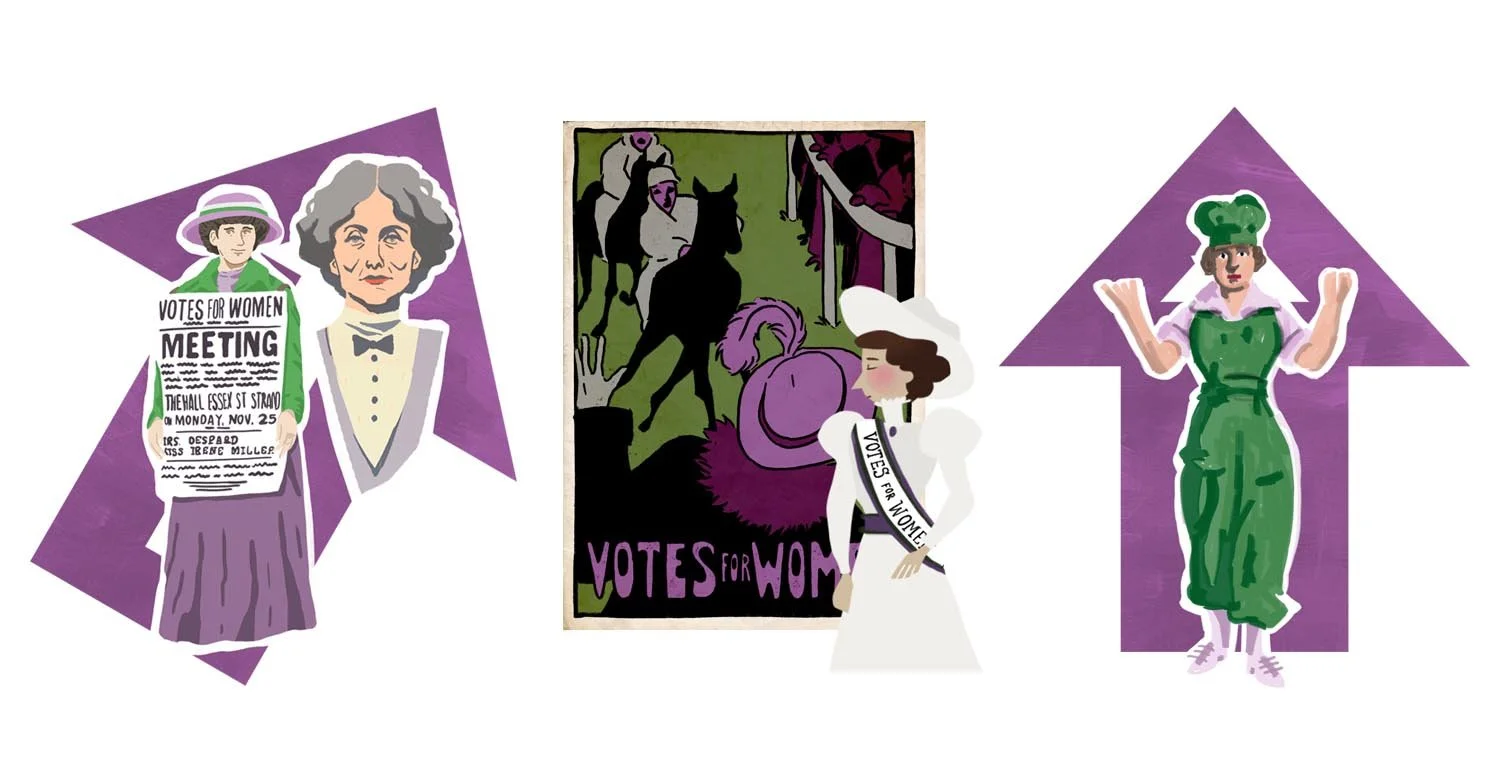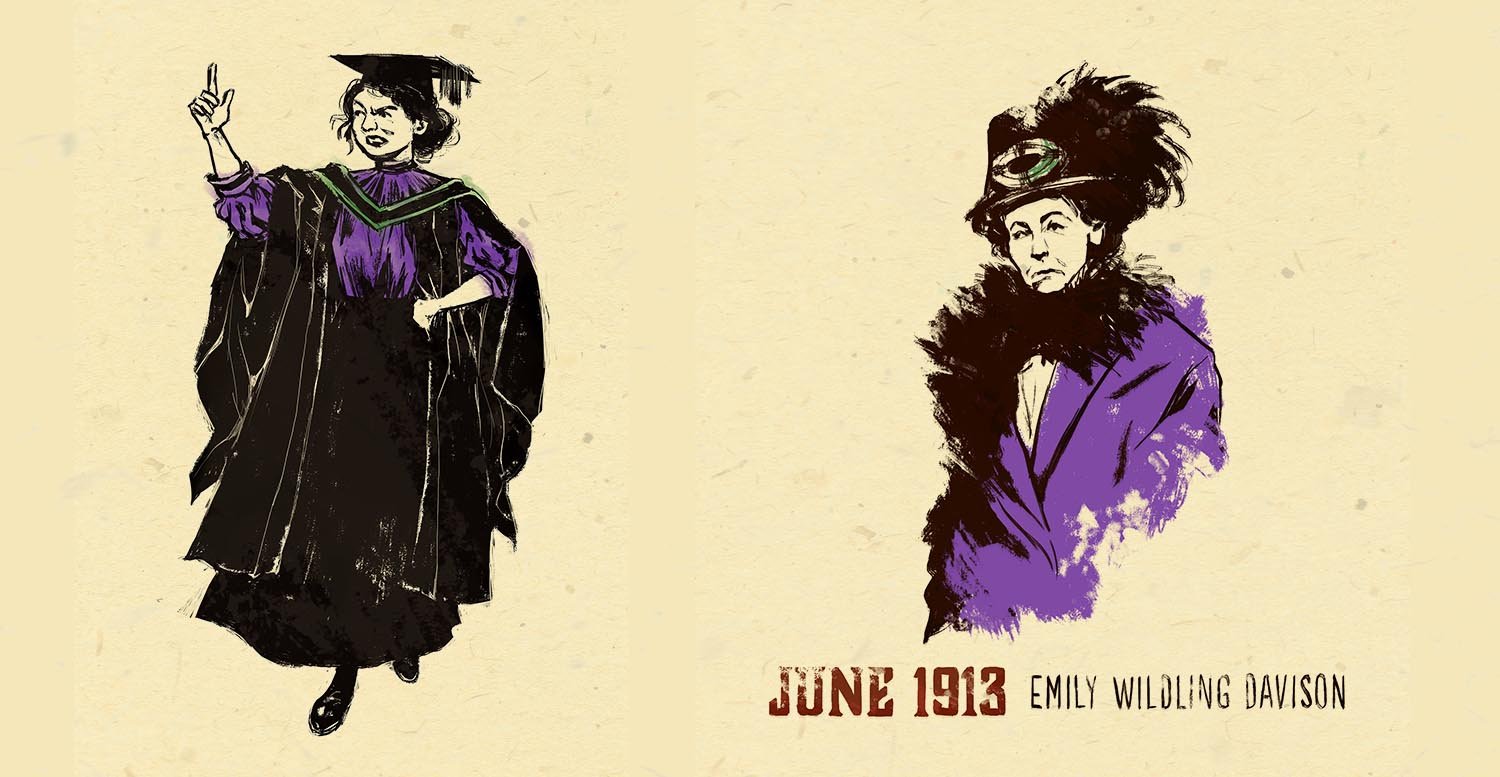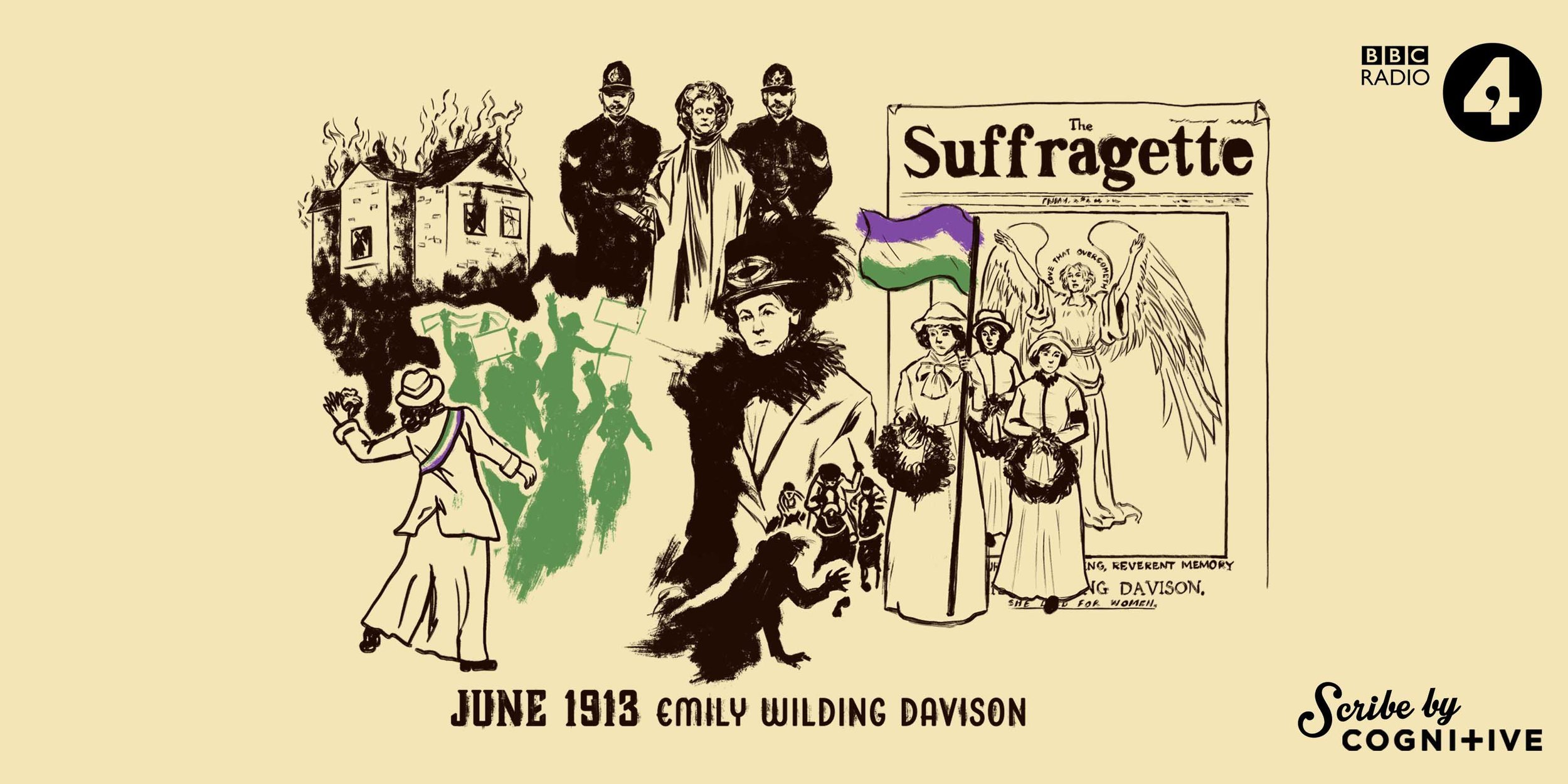Mapping out, drawing and animating history *Ahem* Herstory!
We are continuing our creative collaboration with the BBC and Radio 4 with this animation to explore what the suffragettes did for us. It was 100 years ago that the women won the vote but what led to this historic moment?
At Cognitive we love unpacking complex information and mapping it out in space and stories like ‘What the suffragettes did for us’ are a great opportunity to supercharge the narrative with emotive drawings and kinetic animation.
One big bonus of working with the BBC and Radio 4 is that they are experts in creating great scripts and audio. We cut our teeth on this way of working, collaborating on the RSA Animate series with the RSA, who provided the audio direct from speakers like Sir Ken Robinson and Daniel Pink. In this instance, the BBC provided the script, aptly written by feminist writer Daisy Buchanan and voiced by TV presenter Scarlett Moffatt.
Once we received the script, we could get to work. Because of our past collaborations with the BBC and Radio 4 on animations like ‘The People’s Desert Island Discs’ and ‘When did being gay become a crime?’, we have a great working relationship with the team there. They trust us to create work that delivers exactly what they need and because of this we have some freedom to experiment with different styles without deviating from our methodology of visualising information in engaging and memorable ways.
We spoke to the members of the Cognitive team behind the animation to find out how they brought the ideas to life and supercharged such a historic story.
Tom Bradshaw and Patience Nottingham were the illustrators on the project.
Tom: First of all, we received the script which was partially written. Our first step was to look in to the history of suffragettes and research the artwork from that time to try and understand the look and feel for the film. For example, we looked at the propaganda posters from that time and tried to replicate some of those ideas.
Patience: We did a few tests of style but we didn’t really go with that style in the end. We wanted to illustrate something a bit livelier and the client wanted it livelier too.
Tom: We started with the Art Nouveau poster style and then found some funnier stuff. The cartoons from the time. But these tended to be anti-suffragette propaganda, which made the suffragettes all look evil and witchy and angry. So we stayed away from that.
Patience: Conversely, the images the suffragettes were using themselves were very elegant looking, so we went for that style to reflect their integrity.
Tom: We wanted the style to be nice and free so we used a brush called ‘deliciously dry’ which gave the effect of acrylic paint on a dry paintbrush, which made the drawing livelier.
“The images the suffragettes were using themselves were very elegant looking, so we went for that style to reflect their integrity.”
The piece was directed by one of Cognitive’s Senior Creatives, Kayle McLeish, who spent time mapping out the information and designing the structure and flow of the piece. All of Cognitive’s films are very collaborative and the creativity usually starts with a kick-off ‘Swarm’ – you can find out about this and the whole Cognitive creative process by watching our process films.
Tom: In the swarm, we got the ideas and concepts down but we were also keeping an eye out for how the piece could be drawn at the same time. One of Patience’s images was key to the look and feel. It was Christabel Pankhurst as a student.
Tom and Patience managed to work together and cement their individual styles seamlessly so it looks like the work of one artist. They started off by dividing the work with Patience taking on the design of the characters and Tom organising the layout and design elements, but eventually as the work progressed they both worked on all of the elements together.
Getting a likeness in drawings is a key discipline in some of our work. Tom redrew the Michelle Obama character. Originally the character was drawn not smiling. Tom says, ‘Her smile is how you recognise her.’ These creative decisions are ones that Cognitive’s illustrators are constantly making.
Working with clients can be challenging. Patience reflects on what it’s like to receive feedback. ‘I have to remember they are not my drawings, they are essentially the client’s drawings and I have to let go my feelings about a particular drawing for the benefit of the final piece, and obviously what the client needs.’
After the illustrators have completed the final ‘inks’ then the animators can get to work. Jackie and Paco were the animators on the project. Jackie replacing Matt, after he fell ill.
Jackie: I jumped on the project and followed on from the work that Matt had started. The animation style that we set out was a gentle unveiling of information. We wanted a slower pace with more clarity to the information. We used sweeping camera moves and focused in on specific elements. Because of this slower pace we couldn’t cheat with the animation. Nothing too abrasive.
“The animation style that we set out was a gentle unveiling of information. We wanted a slower pace with more clarity.”
Paco: The drawing style was good to work with. We had to be aware of the drawing and the position and posing of certain figures and where we could put pivot points and the natural flow of things.
The animation has a lot of information and elements on screen but Paco explains how the piece retains clarity:
Paco: Kayle mapped out the content and he’s a good Senior Creative because he allows a lot of freedom with the animation. We start with a camera pass on the bluelines and work out what needs to move as we journey around the screen.
Jackie: Once we had set out an animation style we just followed that through the animation. It has characters, symbols and textural elements throughout and we followed a sort of smooth movement, text, fade in, a drawn-in figure to keep you focused on that section.
The main point to animating in this kinetic way is to make sure that the audience remains focused on the content that is being revealed on screen at the time.
Andrew Park, Cognitive’s director, viewed the film for the first time today and said, ‘It was a really great piece of creative work that tells a fascinating and important story. I am really proud of the creative team that has brought it to life. I love the drawings, they have a lot of energy and the animation is clear, cogent and engaging I think it fulfils the BBC’s mission to inform, educate and entertain.









